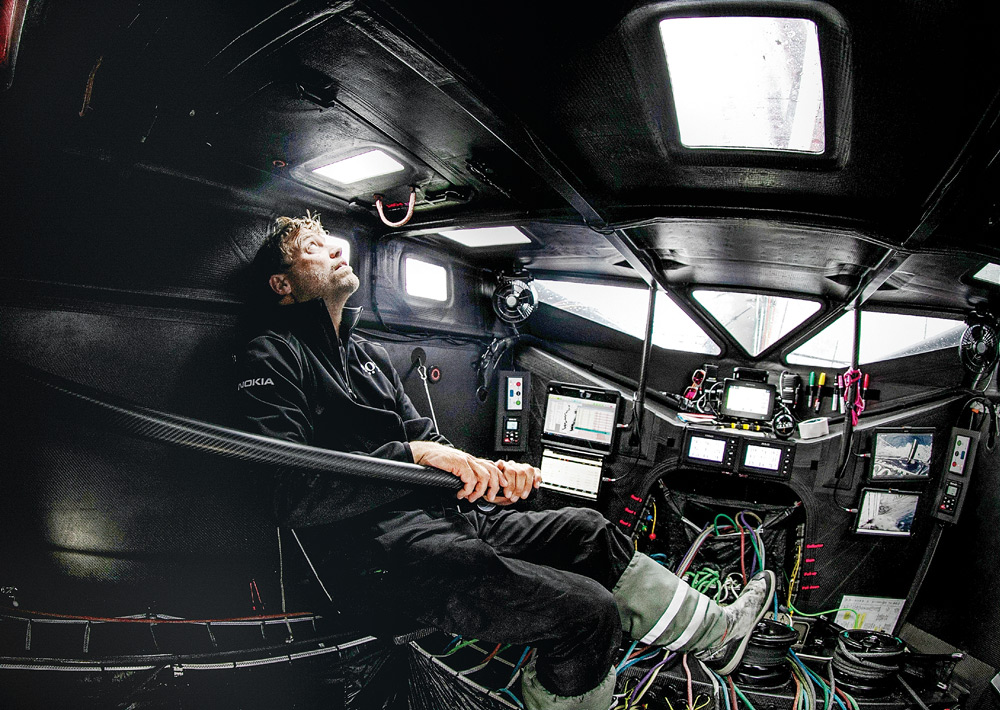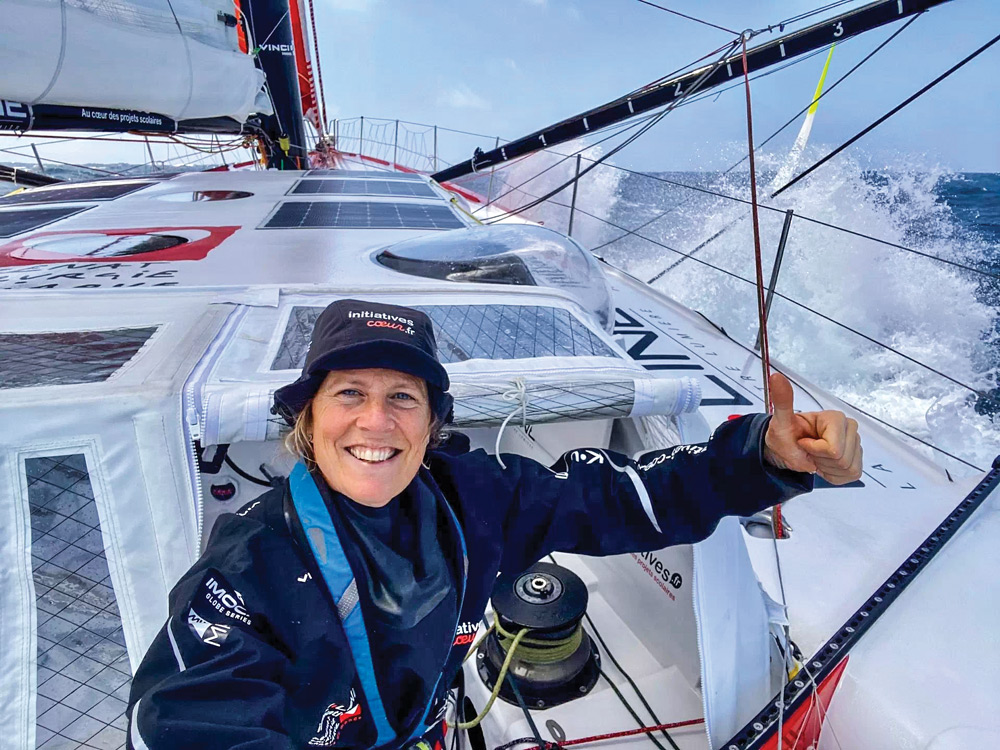Mayday
In the dark of the night in the far south Atlantic, Jean Le Cam, right, rescued fellow solo skipper, Kevin Escoffier, left, after his boat broke in two and sank in the Vendée Globe Race
The fragility of these powerful foiling racing machines is causing a high attrition rate. PRB had been converted to a foiling boat, one of five converted foiling boats entered in this race. The other foiling IMOCAs are brand-new designs, which make up more than half of the fleet with the other half being nonfoiling IMOCA 60s. But what led to PRB’s catastrophic failing has yet to be determined.
“I was so happy to see Jean, but I still have in my head the picture of my boat with the nose pointing up, broken in two, with water and my stuff everywhere,” Escoffier said. “It’s hard to believe, like it’s a bad dream.”
Escoffier said he was confident of the rebuild, and that he put “so much carbon” in the boat. But structural damage was not limited to PRB. Leading the race at the time, Alex Thompson’s Hugo Boss, a brand-new foiling IMOCA 60, suffered major damage earlier in the race when the fleet was sailing in milder conditions off Brazil. A primary longitudinal stringer broke loose from the hull, and Thompson spent days epoxying carbon fiber reinforcements. Confident of the repairs, Thompson set off only to break one his rudders, forcing him to retire to Cape Town.

“For the better part of 20 years this race has been my goal, and this time I really thought it was possible to win, or at least to finish,” Thompson said. “It’s heartbreaking.”
Hitting unidentified floating objects referred to as UFOs, had taken its toll on the rest of the fleet. Race favorite Jeremy Beyou’s brand new foiler Charal had to return for repairs just after the start, and he was sailing in last place, having restarted more than a week behind the fleet. At least five other boats are sailing with broken foils or have retired.
Sam Davies, one of six women racing the Vendée Globe and the only one with a foiling IMOCA 60, struck a UFO off the Cape of Good Hope, sending her boat from 30 knots to zero. Davies was forced to turn her boat toward Cape Town to assess the damage.
The winner of the race may come down to the survival of the fittest. The fleet struggled through light wind to get to the roaring 40s, with unseasonal wind patterns, but by December had found its way to southern latitudes. Leading the fleet by 250 miles at press time was Charlie Dalin, who sailing one of the few intact brand new foilers.
“I am discovering something I have never had to do before.” Dalin said. “I find myself looking for the brake pedal. The sea state in the Indian Ocean is really what is limiting my speed. Sometimes the boat accelerates in the surf and we go to 30 knots and you don’t know how it is going to end.”
Le Cam had continued racing, and had moved back up to fourth place, although he will be given time back to compensate for the rescue. The plan was to transfer Escoffier to a French navy frigate near the Kerguelens Island, but it might be until Yes We Cam reaches New Zealand before Escoffier could be taken off.


Comments